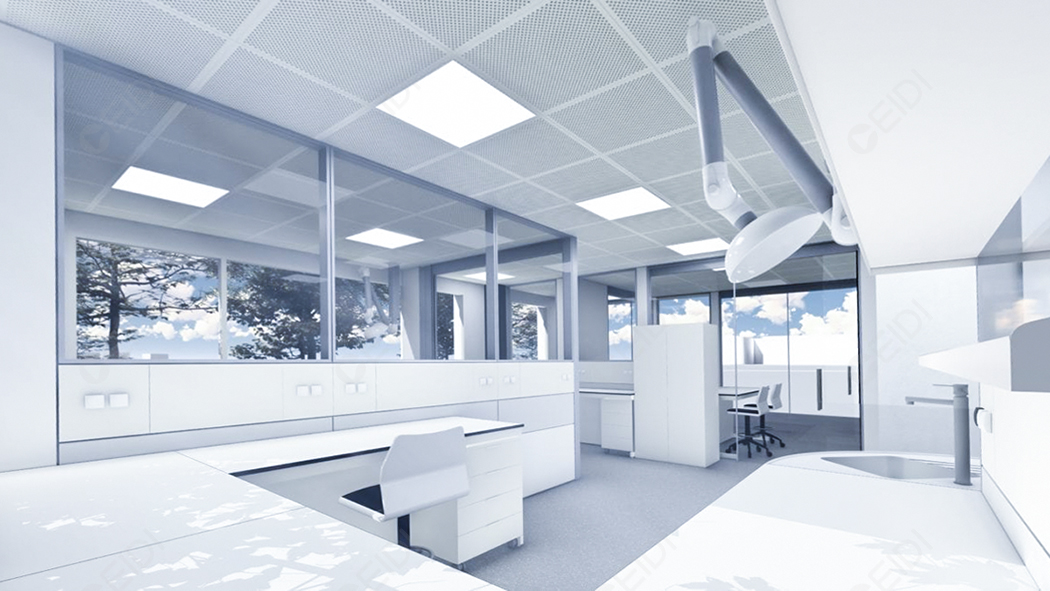Welcome to the official website of Xidi laboratory, the laboratory design and decoration recognize Xidi!
|
|
Home >> News >> Technology
文章出处:Technology|阅读量:836|发表时间:2021-04-07
As a kind of anti-corrosion protection polymer material, coating is widely used in construction, shipbuilding, automobile, equipment manufacturing and other fields. As far as coatings are concerned, they can be divided into solid coatings and liquid coatings according to their form; they are divided into industrial coatings and civil coatings according to their use, and the further subdivisions will be more detailed. For example, industrial coatings are divided into color board coatings, automotive coatings, Architectural paints, wood paints, aircraft skin paints, etc.; according to their effects, they are divided into anti-corrosion paints, anti-rust paints, waterproof paints, moisturizing paints, elastic paints, insulating paints, and anti-fouling paints. But no matter what kind of paint research and development, testing laboratories are chemical laboratories, with high pollution and high risk. With the continuous improvement of product quality awareness today, the coating testing laboratory, as the core technical organization for product quality testing systems and new product research and development, determines whether the company’s products can enter the market and meet the needs of market competitiveness. Therefore, CEIDI’s focus in the design of such laboratories will be on how to ensure that the laboratory is carried out safely and effectively, while taking into account the safety of the operators, and the comprehensive treatment of exhaust gas and wastewater effectively, without causing pollution to the environment.

Function room planning of paint testing laboratory
The functional room planning of the paint testing laboratory is planned based on the paint testing items and the experimental operation process. The paint testing laboratory can generally be set up with the following functional units: sample room, spray film making room, high temperature drying room, basic paint laboratory, constant temperature and humidity laboratory, artificial accelerated aging room, salt spray corrosion laboratory, general environment Laboratory, physical and chemical analysis room, balance room, high temperature room, standard solution preparation room, organic pretreatment room, inorganic pretreatment room, raw material testing room, instrument analysis room (including gas phase room, gas quality room, liquid phase and ion chromatography room, Atomic spectroscopy room, molecular spectroscopy room, physical property analysis room, electron microscope room, etc.), as well as auxiliary washing room, pure water room, air source room, reagent storage room, office, data archive room, etc. It is necessary to pay attention to the reasonable setting of the three areas of the cleaning work area, the non-clean area and the quasi-clean area of the general operation, and the appropriate matching of the buffer room, so as not to cause waste of space. Once the functional room in the cleaning work area is not well ventilated, excessive dust entering the standard will affect the test results. For example, in the spraying laboratory, it will directly affect the quality of the paint film. So designers still have to think about planning and designing in large paint factories.
Design parameters of temperature, humidity and pressure difference in paint laboratory
GB/T 9278-2008 (equivalent to ISO 3270) "The Temperature and Humidity of Coating Sample Condition Adjustment and Test" clearly stipulates that the standard ambient temperature for coating testing is (23±2) ℃, and the relative humidity is (50±5)%. Therefore, the paint testing room must be equipped with a constant temperature and humidity room that can strictly meet the requirements and strictly control its temperature and humidity during the entire test process. In addition, precision analysis instruments such as the infrared spectroscopy room should control the temperature and humidity as required. The clean room and the surrounding space must maintain a constant positive pressure. For different levels of clean rooms and clean areas, the pressure difference between the clean area and the non-clean area should be ≥5Pa, and the pressure difference between the clean area and the outside should be ≥1OPa.
Ventilation and exhaust of paint laboratory
The paint will use and produce some toxic or unidentified chemical gases during the testing process, which must be removed in time to prevent workers from inhaling them. This part of the exhaust gas can be eliminated by fume hoods, fume hoods or local ventilation devices. The design of the ventilation system of the paint laboratory should integrate the building function, plane distribution and use requirements, comprehensive technology, economy, management and other factors, and consider the process flow, use situation and harmful gas properties and other factors to design. Laboratory ventilation requires all fresh air to come from outside, and polluted gas cannot circulate indoors.
Paint laboratory water supply and drainage
The paint laboratory is very particular about water. Because of its design pollution category, except for the necessary tap water, the water and spray water in all instrument rooms should be set in advance. The properties of wastewater produced under the influence of chemical reagents are different, and it must be treated according to the degree of hazard. In the design, a supporting sewage treatment area should be constructed so that harmful wastewater can be discharged into the sewage pipe after purification.
Paint laboratory power supply
General electricity and test electricity must be separated. For some precision and precious equipment, it is required to provide stabilized, constant current, frequency stabilized, and anti-interference power supply. If necessary, an uninterrupted power supply system must be established and a dedicated power supply must be provided.
In summary, coating products need more testing items, liquid performance testing, coating preparation and construction performance testing, conventional coating performance testing, toxic and hazardous substances and prohibited substances testing, special project testing for special coatings (fire protection, heat insulation, Anti-skid and other performance), there are also various environmental simulation experiments, which can be regarded as quite a lot of experimental categories for functional testing. Therefore, there are higher and more professional requirements for laboratory builders. In the construction of such laboratories, CEIDI Xidi will routinely adopt the EPC general contracting model for project construction, which can better integrate design and decoration and professional system construction.